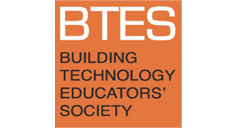Techne: Teacing Iterative Tectonics to Architecture Students
Abstract
A work of architecture is made of numerous components and learning how to use these elements to communicate ideas gives designers agency to enrich their work. Becoming engaged in how buildings are made and exploring how to assemble materials is a critical opportunity for architecture students, one that might help them to develop a tectonic language informed by critical exploration. Nathaniel Coleman articulates the opportunity and concomitant challenges: “Architecture is not as nuanced as language; its elements are expressively more limited but potentially more immediately powerful. Architectural elements including materials, details, and forms constitute a series of hieroglyphic characters available for a kind of physical writing that through use speaks directly to the body. More explicit links between architecture and language could take shape at those junctures where material and form analogize some describable social idea. Here, social is intended to encompass individual and group experiences of being in the world, individually or collectively, from the uprightness of a body to the character of a community. The difficulty modernist architecture has in locating points of intersection with language arises, at least in part, from the tension between exaggerated individual artistic expression in one direction and trivial practice in the other, with both dominated by a more than less universal building industry that demands standardization.” The University of Arizona School of Architecture created a course called Techne to provide second year students the skills needed to support their studio education. The course was intended to integrate digital modeling, shop skills, photography and image management, and other skills. In the current incarnation, we were given the opportunity to focus the skills training on improving students’ ability to use material exploration as an iterative tool that could inform learning digital tools, and to help students to learn to move between digital production and physical fabrication, leading students to learn tectonics through the creation of both physical constructions and digital analogs. Teaching tectonics is a process, one that requires the instructor to focus on the methods of fabrication and construction at the beginning of any project. Formal exploration, the normative approach of most design courses needs to follow considerations of material assemblies. This does not preclude formal innovation, but it is essential to foreground the materials and methods of construction. As Edward Ford states in The Architectural Detail: My sense is not that joints are necessary for construction, but that they are necessary for coherence, for architectural meaning to occur, even if jointlessness is technically feasible. It is clear that long before the modern era, the understanding of the parts of a building and their constructional relationship was a key to a larger understanding of the building as a manifestation of ideas. The assembly of parts in precarious equilibrium can be understood as a parallel for another system: a social order, a political order, a philosophical order, a natural order.
Keywords: teaching, pedagogy, hands-on learning, tectonics
How to Cite:
Weber, E. D., (2023) “Techne: Teacing Iterative Tectonics to Architecture Students”, Building Technology Educators’ Society 2023(1). doi: https://doi.org/10.7275/btes.1951
Downloads:
Download PDF
571 Views
140 Downloads
